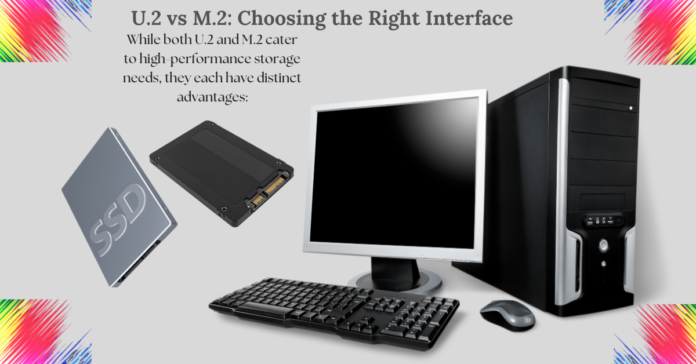U.2, originally known as SFF-8639, is a versatile interface standard for connecting solid-state drives (SSDs) to computer systems. It caters to the needs of the enterprise market, accommodating both cutting-edge PCIe drives and traditional SAS and SATA drives. This flexibility makes U.2 a powerful tool for diverse storage applications.
Technical Specifications and Capabilities
The U.2 interface is characterized by its physical connector, electrical properties, and communication protocols. Unlike the M.2 interface, limited to 3.3V, U.2 supports a wider range of power voltages (3.3V, 5V, and 12V), enhancing its versatility. The connector can accommodate one SATA port, two SAS ports, or up to four lanes of PCIe SSDs, offering high adaptability.
One of the key strengths of U.2 lies in its ability to harness the high-performance capabilities of the PCIe interface. This translates to significantly faster data transfer speeds between the host system and SSDs, especially when utilizing NVMe technology over a PCIe connection. With support for up to four lanes of parallel I/O, U.2 can achieve impressive data transfer rates, reaching up to 4GB/s with PCIe 3.0.
U.2 vs M.2: Choosing the Right Interface

While both U.2 and M.2 cater to high-performance storage needs, they each have distinct advantages:
- U.2: Excels in hot-swappable environments, making it ideal for enterprise servers and storage systems where drives need to be replaced without system downtime. Its 2.5″ form factor allows for better heat dissipation compared to M.2, which is crucial for maintaining optimal performance and longevity.
- M.2: Offers a more compact form factor, making it well-suited for smaller devices like laptops and ultrabooks where space is limited. M.2 drives are also generally more affordable than U.2 drives.
The choice between U.2 and M.2 ultimately depends on the application’s specific requirements, considering performance needs, physical space constraints, and budget.
Market Adoption and Future Trends
The transition from SFF-8639 to the more user-friendly name “U.2″ aimed to enhance market recognition and clarify its purpose as a high-performance interface. Despite the emergence of newer form factors like EDSFF, which offer advantages in scalability and thermal management, U.2 remains relevant, particularly for high-capacity 2.5” PCIe SSDs in enterprise environments.
Conclusion
U.2, with its SFF-8639 connector, represents a significant step forward in SSD connectivity. Its speed, versatility, and compatibility with multiple drive types make it a valuable asset in enterprise storage solutions. Whether for high-performance computing or demanding data center applications, U.2 plays a crucial role in meeting the evolving storage needs of businesses and organizations.


